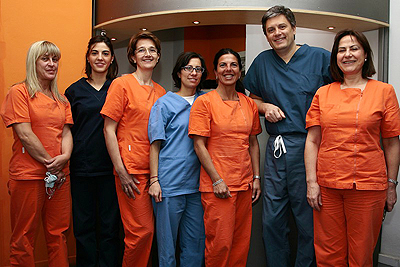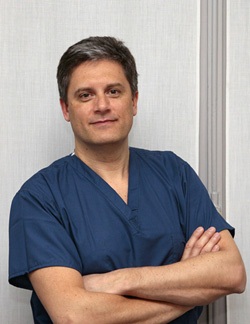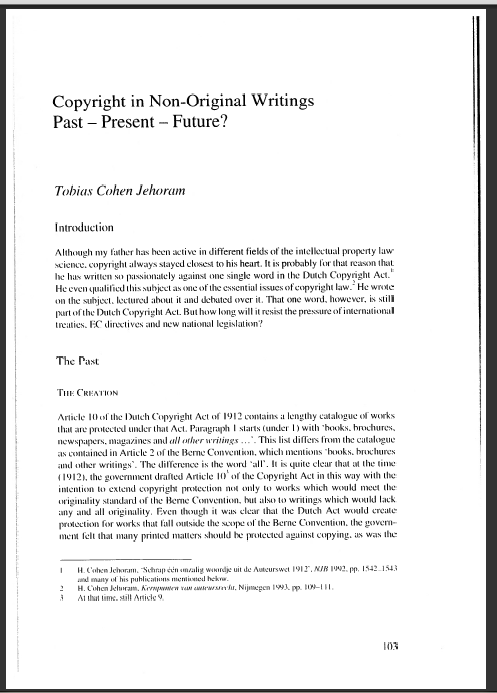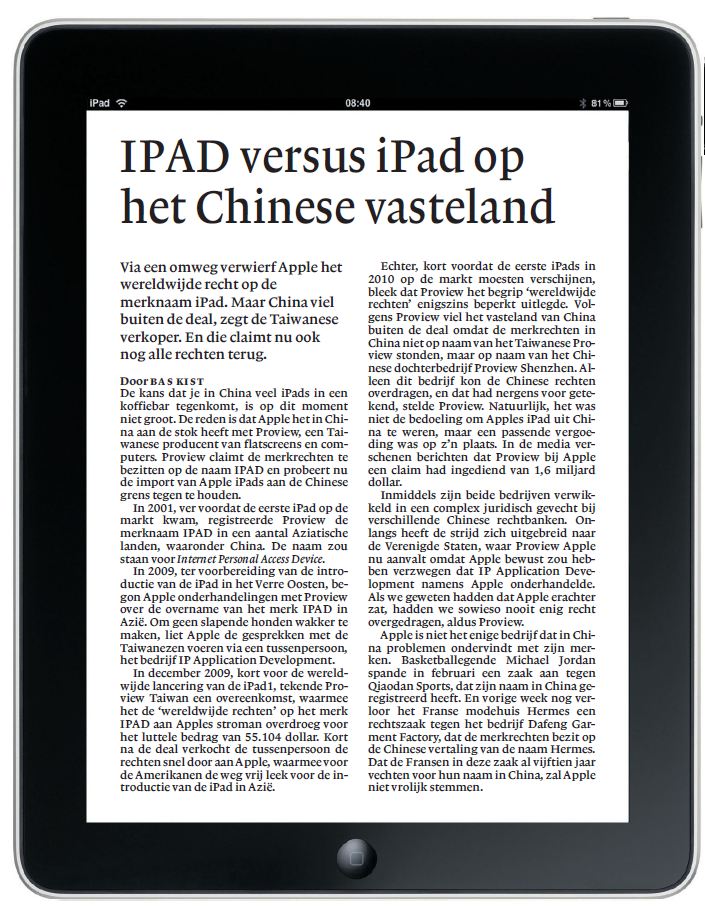Het is lente in ogen van de Turijnse tandartsassistente
Citeersuggestie: D.J.G. Visser, Het is lente in ogen van de Turijnse tandartsassistente, IEF 11056.

Marco del Corso, de tandarts in Turijn, met zijn assistentes. (bron: https://www.studiodelcorso.com/)
Een bijdrage van Dirk Visser, Klos Morel Vos & Schaap, Universiteit Leiden. Reacties welkom dirk.visser@kmvs.nl!
Het is zover. De zon breekt door en het Hof EU begint casuïstisch te rommelen met het begrip “mededeling aan het publiek”.
SCF /Marco Del Corso HvJ EU 15 maart 2012 (C‑135/10) en Phonographic Performance /Ierland, HvJ EU 15 maart 2012 (C‑162/10) [red. IEF 11045]
Na in zijn arrest-Airfield (C‑431/09) (iedere?) “interventie” waardoor een ruimer publiek wordt bereikt als ‘mededeling aan het publiek’ te bestempelen rekt het Hof EU het begrip mededeling aan het publiek enerzijds nu weer verder op, terwijl het aan de ander kant juist wordt ingeperkt.
In SCF /Marco Del Corsokomt het Hof nu met een beperkende interpretatie van het begrip “publiek”.
De clientèle van een Italiaanse tandarts die muziek laat horen in zijn wachtkamer is geen auteursrechtelijk relevant publiek. Want het is een stabiele groep, het is een kleine groep, die bovendien niet steeds dezelfde fonogrammen hoort. Niemand gaat naar de tandarts om naar muziek te luisteren. De tandarts kan niet redelijkerwijs verwachten dat hij door het draaien van muziek meer klanten krijgt. Het laten horen van muziek heeft dus geen invloed op het inkomen van de tandarts. Dus is er geen winstoogmerk en dus is het geen mededeling aan het publiek (ov. 95-100).
Geen publiek, geen winstoogmerk, geen “extra dienst die wordt verleend om er een bepaald voordeel uit te trekken”, geen ‘mededeling aan het publiek’.
Het aantal vragen dat dit oproept is nauwelijks te overzien.
 Zijn werknemers een publiek? Heeft de werkgever een winstoogmerk als hij zijn werknemers naar muziek laat luisteren? Zo ja, waarom die tandarts dan niet? Hoe zit het met de stabiele groep Willem Drees-huis bejaarden? Hoe zit het met de begrafenissen bekend van Hille/Buma?
Zijn werknemers een publiek? Heeft de werkgever een winstoogmerk als hij zijn werknemers naar muziek laat luisteren? Zo ja, waarom die tandarts dan niet? Hoe zit het met de stabiele groep Willem Drees-huis bejaarden? Hoe zit het met de begrafenissen bekend van Hille/Buma?
Ik houd me aanbevolen voor suggesties voor nog veel meer vragen
In de zaak Phonographic Performance /Ierland gaat de onduidelijkheid juist de ander kant op, richting verruiming. In die zaak gaat het om de vraag of radio en tv-doorgifte naar hotelkamers én het beschikbaar stellen van afspeelapparatuur en fysieke dragers met muziek onder ‘mededeling aan het publiek’ valt. De vraag wordt gesteld in de context van het nabuurrechtelijke openbaarmakingsbegrip van artikel 8 lid 2 verhuur-, leenrecht en naburige rechten richtlijn 2006/115. Maar het antwoord is evengoed van toepassing op de auteursrechtelijke mededeling aan het publiek.
Het antwoord op eerste de vraag, met betrekking tot radio en tv-doorgifte naar hotelkamers, is niet verrassend. Dat daarbij sprake is van mededeling aan het publiek was duidelijk sinds het arrest-Rafael Hoteles (C-306/05).
De tweede vraag was echter wel belangrijk. Het Hof oordeelt nu dat het beschikbaar stellen van afspeelapparatuur en fysieke dragers met muziek óók onder het begrip mededeling aan het publiek valt.
Het Hof overweegt: “Uit het feit dat een hotelexploitant zijn gastenkamers uitrust met dergelijke afspeelapparatuur en er fonogrammen beschikbaar stelt, en zijn gasten zodoende de twee elementen verschaft die noodzakelijk zijn om van de betrokken werken kennis te kunnen nemen, blijkt dat deze werken voor zijn gasten niet toegankelijk zijn zonder zijn tussenkomst . De hotelexploitant heeft dus een centrale rol” (ov. 67).
Dit is een benadering die we zo nog niet kenden:
1. de hotelexploitant verschaft twee fysieke ‘elementen’, te weten de afspeelapparatuur en de fonogrammen.
2. die twee elementen zijn noodzakelijk om van de betrokken werken kennis te kunnen nemen
dus:
de werken zijn niet toegankelijk voor de gasten zonder de ‘tussenkomst’ van de hoteleigenaar, die een centrale rol speelt.
En dus is er sprake van een ‘mededeling aan het publiek’.
Waarom roept dit vragen op?
Ten eerste is dit een doorkruising van het traditionele onderscheid tussen wat wij in Nederland materieel en immaterieel openbaar maken noemen. Het beschikbaar stellen van fysieke dragers valt in de Nederlandse en Europese systematiek onder het verspreidingsrecht respectievelijk het distributierecht en in geval van tijdelijke beschikbaar stelling onder het verhuur- of leenrecht.
Dit beschikbaar stellen van cd’s op hotelkamers wordt nu echter ingedeeld bij de mededeling aan het publiek, die traditioneel en systematisch alleen ziet op de uitzending, de vertoning of het ten gehore brengen ter plaatse en (in ieder geval in het auteursrecht) op on demand situaties.
Ten tweede komt de vraag aan de orde of deze vorm van mededeling aan het publiek in het naburig recht nu onder de vergoedingsaanspraak van Sena (art. 7 WNR) valt of onder het individuele verbodsrecht. Bijkomende sub-vragen: Hoe moet de eventuele billijke vergoeding voor deze mededeling aan het publiek worden berekend? Vallen on demand situaties voortaan ook onder het Sena-recht? (Volgens de tekst van de WNR niet).
Ten derde is er natuurlijk de vraag welke andere ‘interventies’ die er toe leiden dat mensen kennis nemen van werken nu als ‘mededeling aan het publiek’ kunnen worden gekwalificeerd.
Is het verhuren van settop-boxen een mededeling aan het publiek? Is het verkopen van zowel cd’s als cd’s spelers een mededeling aan het publiek? Is het exploiteren van een internet-café met pc’s en wifi een mededeling aan het publiek? Het ophangen van schilderijen in musea? Het tentoonstellen van meubelen in een warenhuis? Dat laatste is geen ‘distributie’, blijkens het Peek & Cloppenburg arrest (C-456/06), maar is het misschien een ‘mededeling aan het publiek’? Het verhuren van gebruiksvoorwerpen en gebouwen? Dat valt weer niet onder het verhuurrecht, maar is het misschien een ‘mededeling aan het publiek’?
Waarschijnlijk moeten veel van deze vragen ontkennend beantwoord worden, omdat dat voortvloeit uit het systeem van de regelgeving en de vermoedelijke bedoeling van de regelgever.
Maar hoe het Hof EU die ontkennende beantwoording gaat vormgeven is de vraag. Wij wachten met angst en beven op het moment dat het Hof in navolging van het merkenrecht ‘de functies van het auteursrecht’ gaat ontdekken en daar vervolgens onvoorspelbaar mee aan de slag gaat.
Gelukkig schijnt de zon. (Wat ons weer doet denken aan “Wasserij De Zon”).
Lees ook
Overzicht auteursrechtpraktijk (IEF 10559)
IE-Forum 11090 (prof. Visser, Een tandarts zonder winstoogmerk)
IEF 11045 (Wachtkamergelde (arres))
IEF 11056 (Het is lente in de ogen van de Turijnse tandartsassistente)
IPKat (From Curia to Caries: music to the public in the dentist's chair, incl. tandartsmuzieksuggesties)
KluwerCopyrightBlog (Music broadcasting at the dentist’s and in hotel rooms: any right to an equitable remuneration for the phonogram producers? The CJEU clarifies the notion of “communication to the public”Music broadcasting at the dentist’s and in hotel rooms: any right to an equitable remuneration for the phonogram producers? The CJEU clarifies the notion of “communication to the public”)
Wieringa Advocaten (HvJEU: beschikbaar stellen van CD + afspeelapparatuur = openbaarmaking (en tandartsbezoekers zijn geen publiek) - I) + deel II)
 Bijdrage ingezonden door Frederik Borgesius,
Bijdrage ingezonden door Frederik Borgesius, 
 Met bijgaand commentaar van Tobias Cohen Jehoram,
Met bijgaand commentaar van Tobias Cohen Jehoram,  Bijdrage ingestuurd door Michel Frequin,
Bijdrage ingestuurd door Michel Frequin, 
 Een bijdrage van Dirk Visser,
Een bijdrage van Dirk Visser,  Parallel gepubliceerd van RB
Parallel gepubliceerd van RB  De informatie in dit artikel is overgenomen uit een blogpost die onder
De informatie in dit artikel is overgenomen uit een blogpost die onder  Bijdrage ingezonden door Jan Pieter Hustinx, Gertjan Kuipers en Tjibbe Douma,
Bijdrage ingezonden door Jan Pieter Hustinx, Gertjan Kuipers en Tjibbe Douma, 






















































































